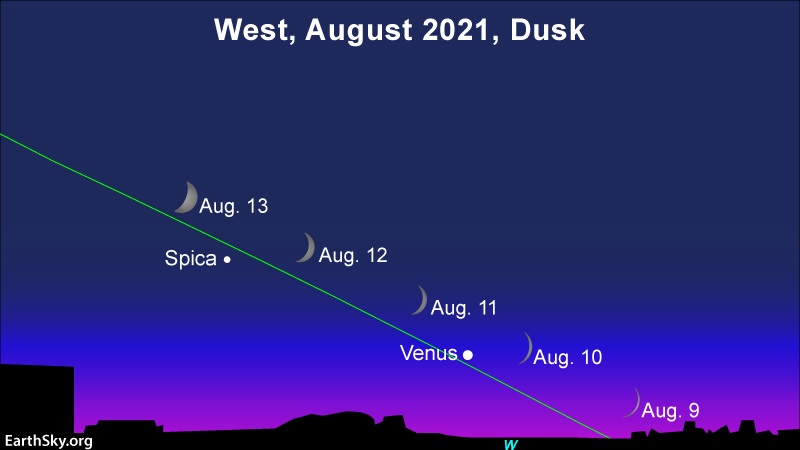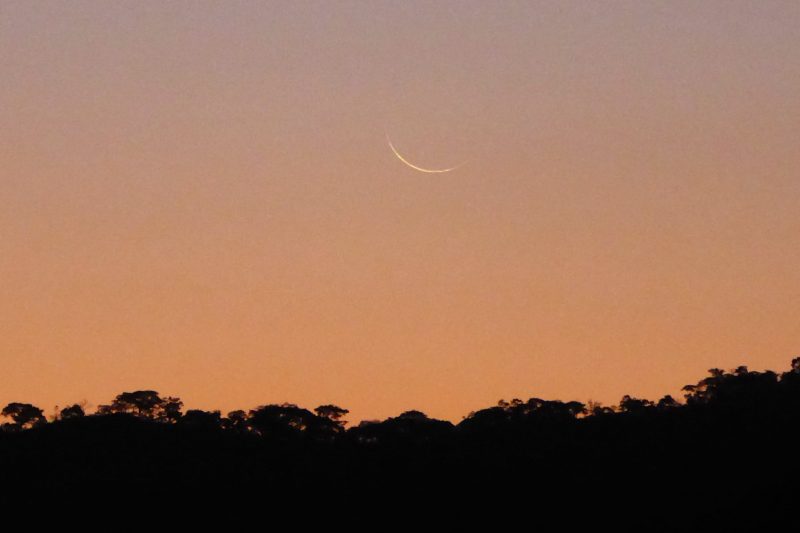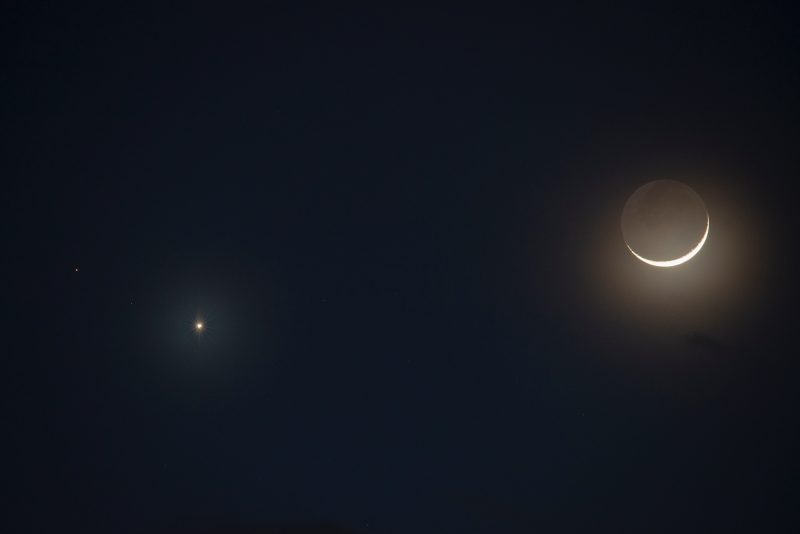
Young moon, Venus, Spica
New moon was August 8, 2021. Perhaps you’ll catch the whisker-thin crescent moon and Venus after sunset on August 9. If you miss it August 9, try again on August 10, 11, 12 or 13. Just be sure to look soon after sunset because the moon will set soon after the sun. That’s good news, by the way, for those watching this week’s Perseid meteor shower between midnight and dawn.
Astronomers use the label young moon for a slim crescent in the west after sunset. It’s a waxing moon, with first quarter moon due August 15. And this month’s full moon, a seasonal Blue Moon, will be August 22.
To see this week’s young moon, look toward an unobstructed sunset horizon. If you can, find a hill or balcony to stand on. That way, you can peek just a little farther over your horizon. Binoculars might come in handy, too, especially around August 9 or 10, when bright evening twilight will compete with the ghostly, whisker-thin crescent.

On these evenings, you’ll also see a bright star in the western sky. It’s Spica in the constellation Virgo the Maiden. By August 12 and 13, the moon will be sweeping past Spica. Although Spica is a 1st-magnitude star, it pales in contrast to Venus. Venus, the 3rd-brightest celestial body after the sun and moon, outshines Spica by nearly a hundredfold.

Will you catch the newborn moon?
As a general rule, it’s difficult to spot a crescent that’s less than 24 hours old (24 hours after new moon). For much of the world, at sunset August 9, the moon will be over one day old. Even so, for much of the world, the slim crescent will follow the sun beneath the horizon before nightfall. So don’t wait around! Start your search no later than 45 minutes after sunset. After sunset August 9 or 10, you might actually see dazzling planet Venus before you spot the moon. If so, use binoculars to seek for the lunar crescent in the vicinity of Venus, the brightest starlike light in all the heavens.
Want to know when the moon turned new and sets in your sky? Visit Sunset Sunset Calendars, remembering to check the moon phases and moonrise and moonset boxes. Note that the time for sunset and moonset presumes a level horizon.

Day by day, watch for the illuminated portion of the lunar crescent to grow. And the moon will stay out longer after sundown. Watch for earthshine softly illuminating the dark side of the moon. Binoculars will enhance your view.

Bottom line: Will you catch the young moon near the planet Venus and star Spica in the west after sunset on August 9, 2021? Maybe. It’ll be easier to see the moon on August 10, 11, 12 and 13.











